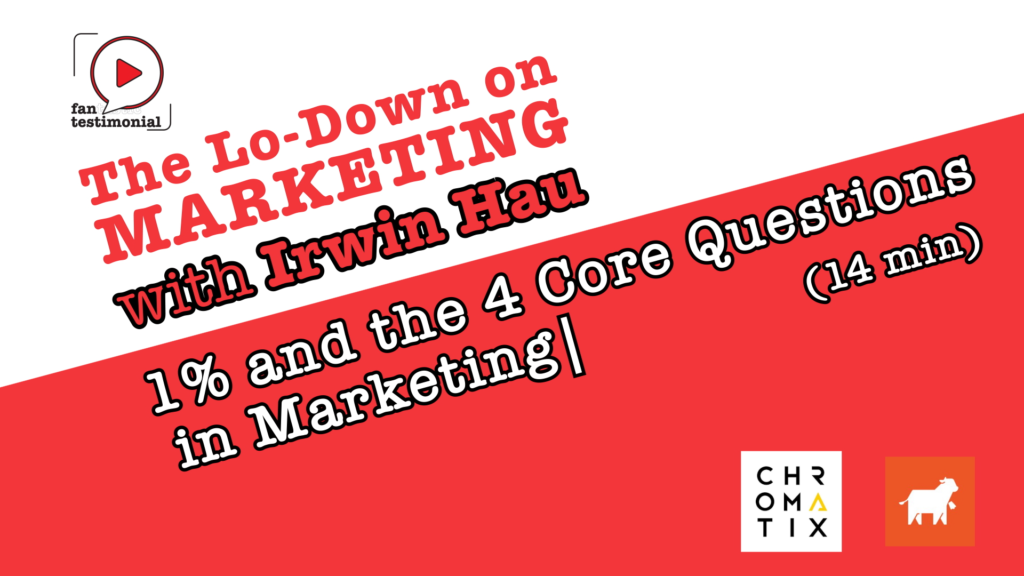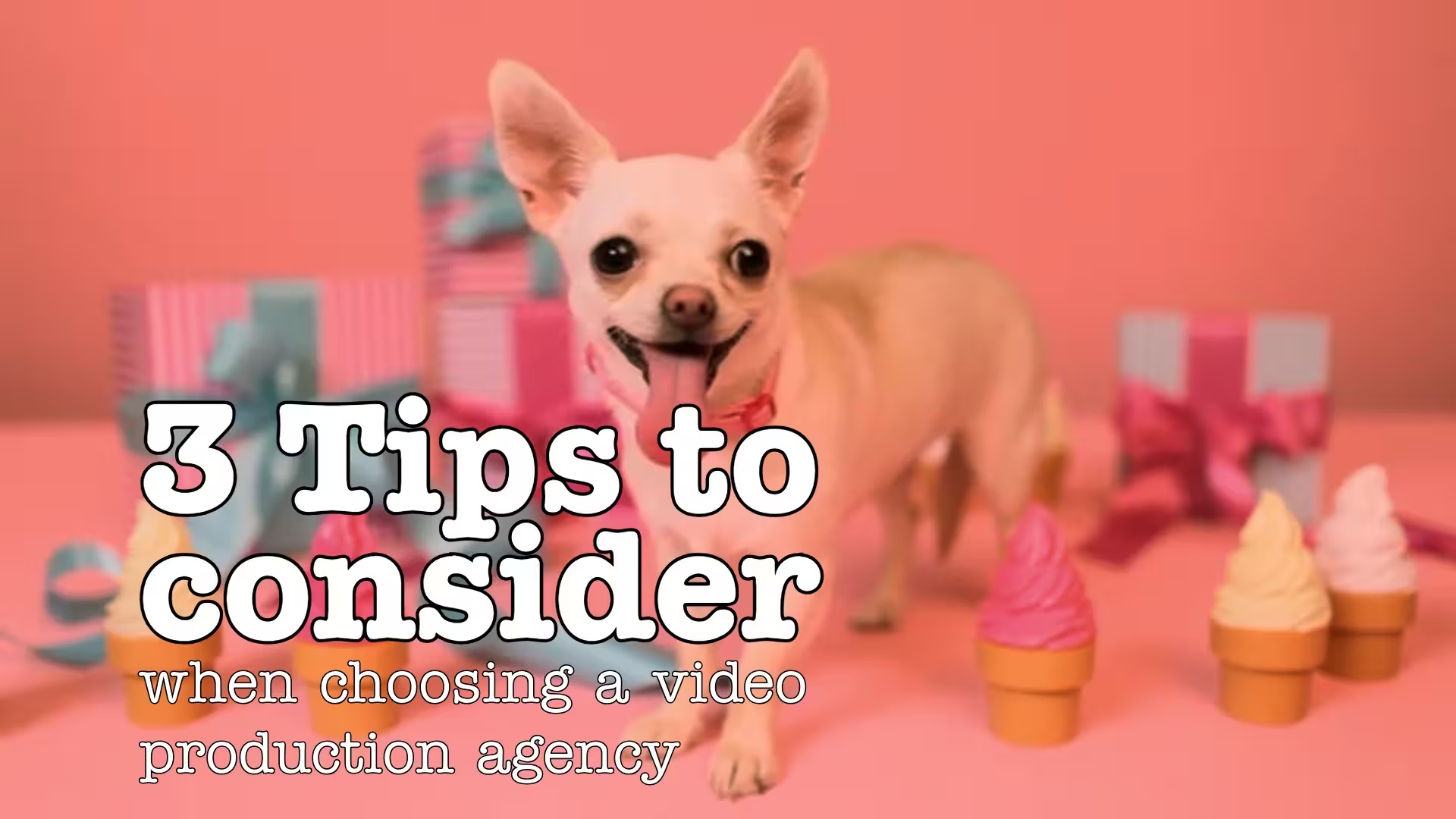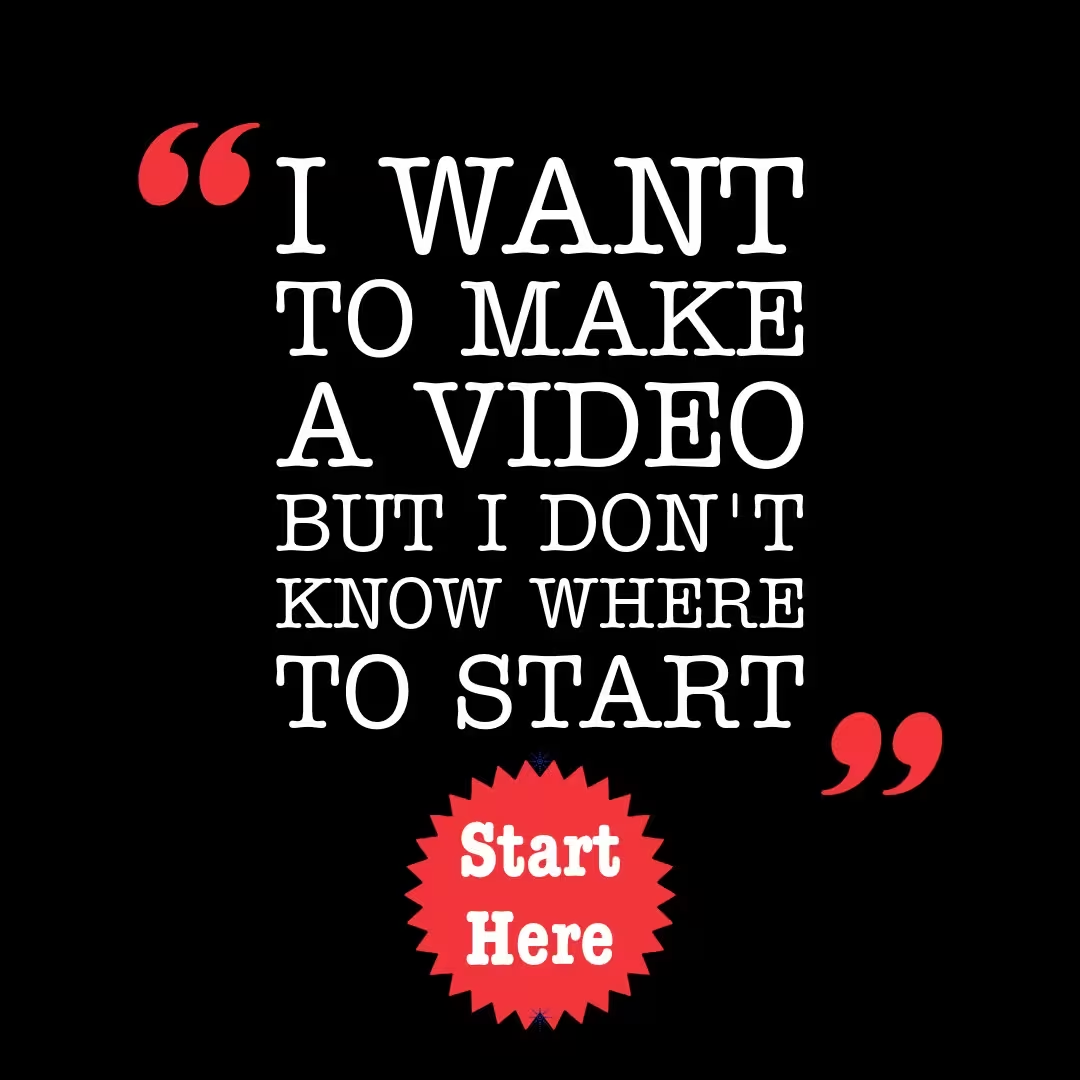This is the first part of a longer Podcast that we will be releasing over the next few weeks. But for those who prefer to read, here’s the transcript below:
Francis: Thanks everyone for joining us. This is my first inaugural, actually, sit down with marketing experts and business experts, and hopefully making this into a longer series.
So today, I want to warmly welcome Irwin Hau. He is the Director of Chromatix, which is a successful, award-winning, digital agency and also a new venture called ConversionCow, which I’ve been using. And I must say, it’s a Martech, SaaS tool, which is like, for lack of a better word, landing page smash together with, leading lead generating pop ups. And I think it’s it, it’s really good.
So thank you very much for joining, for coming on board for this session. And congratulations for your checking of your dream of podcasting with Jason Swenk.
Irwin: Yeah. Thank you, my friend.
Yeah. It was a very good one, but it was 5 a.m. when we actually did it. So, for me, you’re late for him, but, oh man, that was worth the wait. Yeah.
Francis: I look forward to seeing that podcast. Should be good, should be good. Okay. So let’s get into it. So I guess the first thing I would ask you is, you know, you’ve been running your business and, you’ve been doing digital marketing for a long time now; close to a decade or more. So, what are the marketing challenges you face, personally, in your businesses?
Irwin: Yeah. Well, I think the biggest challenge I faced at the very beginning is actually the difference between traffic and conversion. Everyone seems to think that, if you do your SEO, you’re going to get leads, or if you build a website, people will find you, and that there’s some magic one bullet. And I think that it is a misnomer and a bit of a misconception that one thing does everything. It’s actually the sum of those one percenters together that actually make up, and make it really successful.
So we always say that you got to work on ways to get people to you, but then you need to be able to convince them to one, get their attention. That awareness, then push them all the way to action. And I think it’s the sum of all of that together which makes marketing successful. But unfortunately, the issue, maybe for customers, or me, actually come to think about it, is customers sometimes confuse the two together or they kind of say one sentence, assuming that’s one thing. So “Irwin make me a website that’s going to be on the first page of Google.” Whoa whoa whoa whoa whoa. You just talked about two things: web design and being found on Google. Two separate things and converting.
But the problem that I faced actually is and where ConversionCow, my software, came in was I was getting a lot of traffic to my website. Being a professional services business, similar to tradies, if there’s any tradies listening or even other professional service companies listening, we have our websites on the net all the time. People are checking it out all the time. May you realize that or not. And for those who don’t believe me, who are listening, who go, no, no one ever goes to my website, I do no marketing Irwin. My simple test is this: Shut it down for a month. Let’s take it down then. You say you don’t use it all. But I know people look for my phone number. You know, I don’t run ads, but I might have a C-Chart instead, so it’s maybe not sales, but it’s for H.R. You’re recruiting people? Sometimes it’s just a validation check. You know, it’s not like a quick buy, but it’s just. I just want to see if this Francis person is real. Let me just go to his website. You know, W W W, and away we go.
And so it’s making sure that people understand traffic times, conversion rate equals customers. But for me, I realized I was getting a lot of traffic, but I wasn’t converting as well. And so that was a problem I went through. And that’s why I create ConversionCow to help to solve that problem, which has really helped us dramatically.
Francis: So I think every, every business goes through that, that issue of having traffic but not converting. How do you make that traffic into a conversion?
Irwin: Yeah, yeah. It’s really simple if you think about it. There’s only four questions people think of, assuming they’ve already come to you. Okay, so say I’ve just met you for the first time. There’s only four things that go through my mind.
They’re the only four kind of core questions that sum everything up. I mean, obviously this is all packaged with nice design, nice content, great layout, all that kind of stuff. You know, beautiful imagery, videography, and typography. But there are the four key things at the heart of it:
Who are you?
What do you do?
Why should I choose you and how to get in touch with you?
And if you don’t believe me, it’s actually the same four things I actually asked my missus 17 years ago when we got married to get the date. And they’re natural human psychology points: Who are you? What do you do? Why should you care? Maybe. How? How do we not get married? But how do we get to that second date? You know, which is that appointment, the first step, you know, when you’re swiping left or right. I don’t know how to Tinder people do it nowadays, but you know what I mean, right.
So that’s it? Yeah.
Francis: So what’s your what’s your tip on getting—I mean it’s easy too—obviously someone looking for you would have found your website because obviously they need something from a service and you provide that service. Now the third question, why should they choose you? How do you answer that question?
Irwin: Why should you choose? I mean, the first one is more to do with emotion. The second, third, and fourth are more to do with, well, the first one’s more the heart. That’s what I call the heart. The second, third, and fourth are more to do with the head. And why? Especially that third one. Why choose here? Why is it so important?
Do you know the Maslow’s?
Maslow’s hierarchy of needs? If you actually look at Maslow’s hierarchy of needs, it talks about, at the very core, at the bottom, it’s more to do with life, survival, that sort of thing. That’s our base need in life. The second level is actually called safety and security. So no matter what we do in life, essentially, it’s always like I’m putting my guard up in everything I do. Unless you can lower that guard, I’m not going to do anything because safety and security come up.
Why should I choose? Social proof is the biggest and most important thing when it comes to lowering that guard, helping people to cross through. Because once I know who you are, what you do, you know what? I don’t know if I trust you. And so, what kind of trust signals? Awards, accreditations, associations, case studies, testimonials, ISO logos, whatever those things are, are so important. There’s so many great mediums to display it, maybe through images, through text.
But the one I always push and I say is most important is actually through video, because they say a picture speaks a thousand words. Video speaks, I think, 8.4 million. I don’t know how many colors there are, but it’s so much more, and you can convey so much. I mean, there’s a reason why this podcast is in video form, not just a text-based thing, because there’s emotion expressed in visual hierarchy cues as well as audio and stuff. So it’s that combination, and you can get a lot of information in a very concise, short amount of time as well. So, yeah. Yeah.
Francis: Oh, it’s good. You bring up video, obviously. That’s what I do as well. You mentioned that the first one is more emotion. Do you feel that with the third question, why should I trust you, there’s also a very emotional aspect to it in that, you know, you kind of want to be able… you mentioned trust, you mentioned credibility. Should that within that also play into your emotions as well as like, oh yeah, I think I can trust you. I think I like you.
Irwin: I mean, let’s be honest, right? Kind of like when you label someone, are you an introvert or you’re extrovert? You know, it’s not that if you’re an introvert, you have no extrovert in you or vice versa. There’s always going to be a blend of the two together. And it really actually doesn’t really matter which way or the other.
The real heart behind it is you need both. For some industries, the social proof will be more on the rational side. So, for example, to deal with data results, finance is numbers. There’s nothing really emotional. It’s just really A is A, B is B. Did A get B? And if you did, this is the increase of ROI and growth. On the other hand, it’s sometimes like, no, we saw a change in someone. There’s a like we went from a crappy house to the most beautiful mansion, you know, and so that will engage both sides. The fight between the two isn’t like, which is better, rational or emotional? It’s rational and emotional. But we need to know which areas we’re going to put. So a video might not speak as loudly if we’re talking to a data scientist who just wants the stat for the data. But say for like, if you’re selling like commercial property or something that’s a bit more visual, man, those emotional bits of a video would really just sing beautifully. So, yeah.
Francis: You also mentioned this thing about the 1% doing a bit, you know, the 1% of everything that adds up, which is something, I’m not sure whether you got it from the Atomic Habits book by James Clear, which is pretty much what he’s saying, right? You do, if you just improve one percent for a little bit of everything, you get 100% eventually. So, with marketing, what are the 1% that you personally, when you see other businesses do their marketing, what are all these 1% that they need to focus on?
Irwin: Firstly, the 1% is taken from the book and stuff, but it’s the whole notion of, for those who don’t know and stuff like that, it’s never about perfection. It’s about progression. It’s about, and I heard it somewhere once that someone said, it’s about ready, steady, go. No, no. It’s ready. Go. And then let’s steady things out because else, you never move sometimes. And so let’s go for those 1%. Let’s get better in everything we do.
So what are the one percenters? Well, before we talked about traffic times conversion rate equals customers. To me, the one percenters are, what are we doing in the traffic side of trying to get people to us when we look at different types of traffic? Could be inbound, outbound, referral partners. What are the little things that we can do in all these bits that can help facilitate people coming to you? So, if you want to do some brand awareness stuff, maybe the 1% is like you just do a little bit more content, refining the way you write up, reviewing, engaging more with other people’s social posts, building more backlinks, writing, doing more guest posting, optimizing your AdWords, looking at your account. It’s just spending that little bit of time on doing things that change the levers that have a bigger impact.
So that’s on the traffic side. On the conversion side, my favorite side, is what can we do to increase the likability, the trusting, the knowing side of things? Are we A-B testing? Are we testing different messages, Call To Actions, methods of contact? And so that’s why with our ConversionCow tool, which we have built into our software, A-B testing that allows us to check, try, maybe an image gets you more. Maybe it’s more hearts than head or head than heart. We don’t know. And so it’s these little tests.
But please don’t stop at the SEO, AdWords, social to website level. Conversion is, how about 1% better on the phone calls? 1% better on the proposals, 1% at the meeting presentations all the way through. And so it’s these little refinements all the way through, which is what I think a business coach actually does. They sit down with you and just go, what are the 1% you can change through the whole process, just break it down.
And if you’re wondering, well, when you have even talked about fulfillment, you’re just you’re just look at how to get a customer and we’re feeling overwhelmed or whoever’s listening feels a bit overwhelmed that it’s the same question as, “How do I eat an elephant?” One bite at a time to start chomping. You’ll get there. And it’s always painful at the start. But I promise you, like the first time you go to the gym and you leave and you’re an absolute pain. The next day it only gets easier and only gets better. Just start chomping.
So yeah, that’s the 1% in my eyes.




